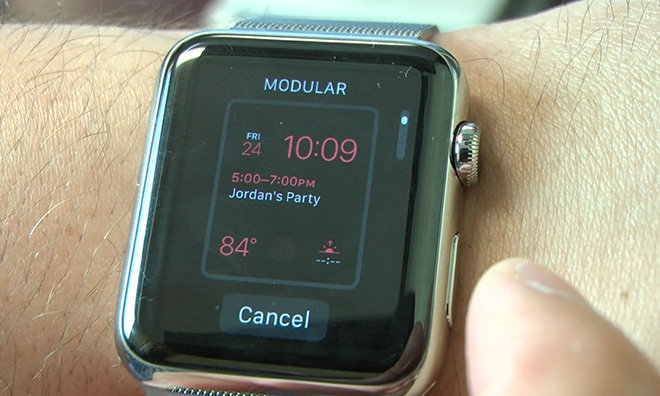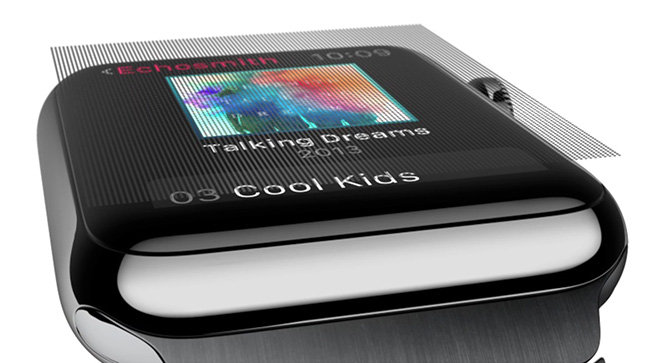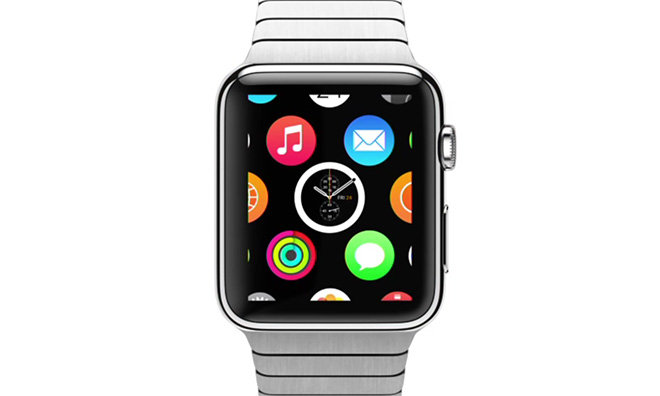Even staunch Apple Watch detractors have to admire the technology Apple managed to pack into its first wearable platform. As Apple's "most personal device ever," Watch boasts multiple advancements to the user interface, two of which — Force Touch and UI concepts invented alongside the Digital Crown — we'd like to see in future iPhones and iPads.
Editor's Note: Apple frequently introduces new technologies and features in a singular new product, then gradually brings them to other devices in its ecosystem, making for a more coherent user experience. Our Watch Effect series examines how the Apple Watch's own innovations might make their way to the iPhone, iPad, or Mac.
Engineering within strict power and size constrains forced Apple to build an entirely new user interface for Watch that is as efficient as it is natural to use. Not able to fall back on its go-to multitouch designs, Apple ultimately took a page out of traditional watchmaking to develop a physical control built around a crown and stem, branded on Watch as the Digital Crown.
The hardware itself is undeniably Apple. The crown rotates smoothly on its machined hub with a comfortable degree of resistance, clicks are satisfyingly tactile and the pusher mechanism feels solid. What makes Digital Crown stand apart from similar solutions, however, is how connected it feels to Watch software. When the crown moves, Watch's UI immediately responds, almost like the meshing of gears in a mechanical wristwatch.
By opting for an external control wheel, Apple smartly offloaded input commands like scrolling and zooming, operations normally handled by multitouch on iPhone and iPad. This kept fingers from obscuring Watch's small display.
Rumors at one point claimed Apple would integrate Digital Crown hardware into its iOS device lineup, but with any space saving benefits outweighed by reduced usability, the company is unlikely to move in that direction. As handheld devices, iPhone and iPad rely on their screens for nearly all user interaction. Tacking on an external wheel would do little to enhance user experience.
Apple should, however, cherry pick a few UI concepts spawned from Digital Crown interface that would survive migration to iPhone and iPad, perhaps in conjunction with another technology debuted in Apple Watch: Force Touch.
Apple's name for pressure-sensitive input technology, Force Touch uses sensors installed around the periphery of Watch's screen to measure the amount of force being exerted by a user's finger. Watch's UI responds to heavy presses contextually, for example invoking watch face customization mode in the watch app.
Force Touch already made the leap from Watch to a larger Apple product — the all-new 12-inch MacBook — and with bigger screen sizes, iPhone and iPad are logical next steps for integration.
After Force Touch made the leap to MacBook, the logical next steps in Apple's usual progression toward device ecosystem parity would be iPhone and iPad.
In its current Apple Watch and MacBook implementations, Force Touch is not a granular means of input; users can't force click on specific icons, for example. Bigger touchscreens provide space for more sensors, which in turn allows for greater specificity through triangulation or quadrangulation of a surface. In other words, a 4.7-inch iPhone screen could potentially lean on Force Touch to pinpoint finger input along the x, y and z axes, simultaneously.
Applied to existing iOS gestures, Force Touch could feasibly take the place of Home button double-click commands for multitasking, press-and-hold for Siri, or any number of secondary or tertiary control functions.
Circling back to Digital Crown input concepts, a granular Force Touch method on iPhone would enable the replication of UI operations developed for Apple Watch. For example, zooming in on and opening an app from the Apple Watch springboard can be accomplished on iPhone using force input. Alternatively, iPhone users may invoke app-specific menus via Force Touch, or perhaps enter a type of "peek mode" to quickly view vital information from an app without actually opening it.
Like the erstwhile iPod click wheel, Watch's Digital Crown is especially well suited to scrolling operations. Navigating a long list of contacts is arguably more intuitive on Watch than iPhone or iPad, which require multiple swipes or taps on the quick letter and number selection side bar.
Apple could, however, use Force Touch to translate the Digital Crown's rotational input into a gesture suitable for iOS. For example, a swipe-and-hold gesture could start a scrolling operation, after which finger pressure dictates scroll speed, allowing users to zip through expansive lists without lifting off from the screen.
Various patent filings show Apple is interested in bringing Force Touch to iPhone, though evidence of impending hardware integration has yet to surface. Questionable rumors in April claimed Force Touch will make its way into the next-generation iPhone "6s" series due out this fall, but limited to the larger '6s Plus' model.
As for iPad, industry speculation suggests incorporation in an upcoming 12-inch 'iPad Pro' model in 2016.
 Mikey Campbell
Mikey Campbell









-m.jpg)






 Charles Martin
Charles Martin
 Christine McKee
Christine McKee
 Wesley Hilliard
Wesley Hilliard
 Malcolm Owen
Malcolm Owen
 Andrew Orr
Andrew Orr
 William Gallagher
William Gallagher
 Sponsored Content
Sponsored Content








31 Comments
The digital crown is awesome. Just like all previous Apple input innovations, it feels almost "magical", in terms of how fluid and responsive it is. A joy to use.
Force touch is definitely coming to iOS devices. No doubt. What I'm wondering though... where does the digital crown go from here? Personally, I think that just like the iPod click wheel you compared to... the digital crown isn't going to stick around. Seems to me that after a couple of generations they can replace it easily by making the side/edge of the watch touch sensitive. You never know with Apple though... For instance, they have definitely kept a physical home button a lot longer than I thought they would. Maybe they will finally get rid of it with force touch... we'll see.
Apple seems to be pushing Force touch big time. Sales reps at the Apple store were in full force teaching customers how it works on the new MacBooks. Many struggled double clicking by habit, but it's probably just a matter of practice.
And finally, there is an update to the Magic Trackpad! It is a fantastic input device – and will get even better, once force touch is implemented.
[quote name="friedmud" url="/t/186409/watch-effect-how-the-digital-crown-and-force-touch-could-inform-future-ios-device-design#post_2726794"]Force touch is definitely coming to iOS devices. No doubt. What I'm wondering though... where does the digital crown go from here? Personally, I think that just like the iPod click wheel you compared to... the digital crown isn't going to stick around. Seems to me that after a couple of generations they can replace it easily by making the side/edge of the watch touch sensitive. You never know with Apple though... For instance, they have definitely kept a physical home button a lot longer than I thought they would. Maybe they will finally get rid of it with force touch... we'll see.[/quote] My thoughts Exactly!! When I mentioned my disappointment with the crown fans here flamed me disregarding all my points. It looks old and ancient. My idea was to have a touch sensitive edge like the "ribbon controllers" you see on keyboard instruments. Slide forward/zoom in, slide back/zoom out etc. A watch crown is the last thing I would borrow from the industry. Pinching those tiny wheels and cranking them was always tedious for me. I haven't tried an ?Watch yet so hopefully it functions better than I imagine.